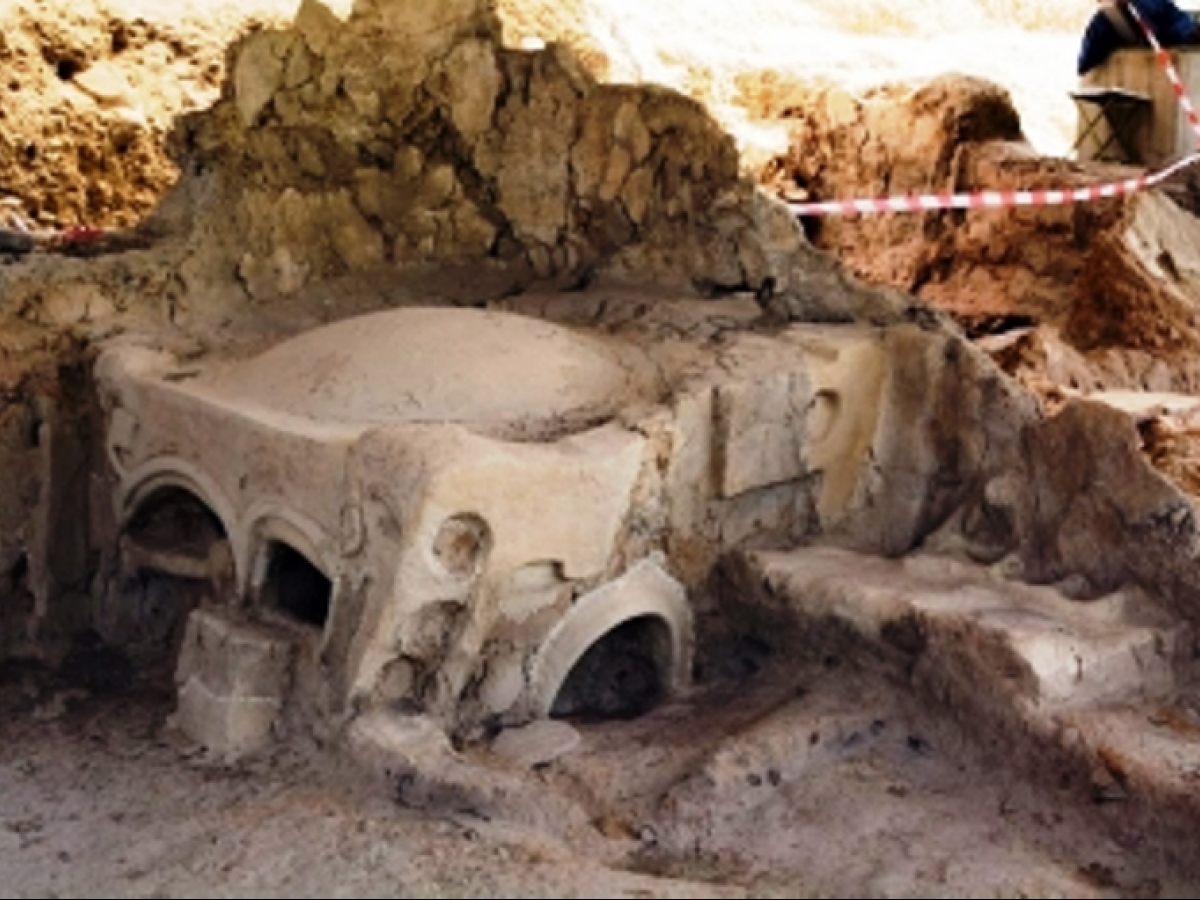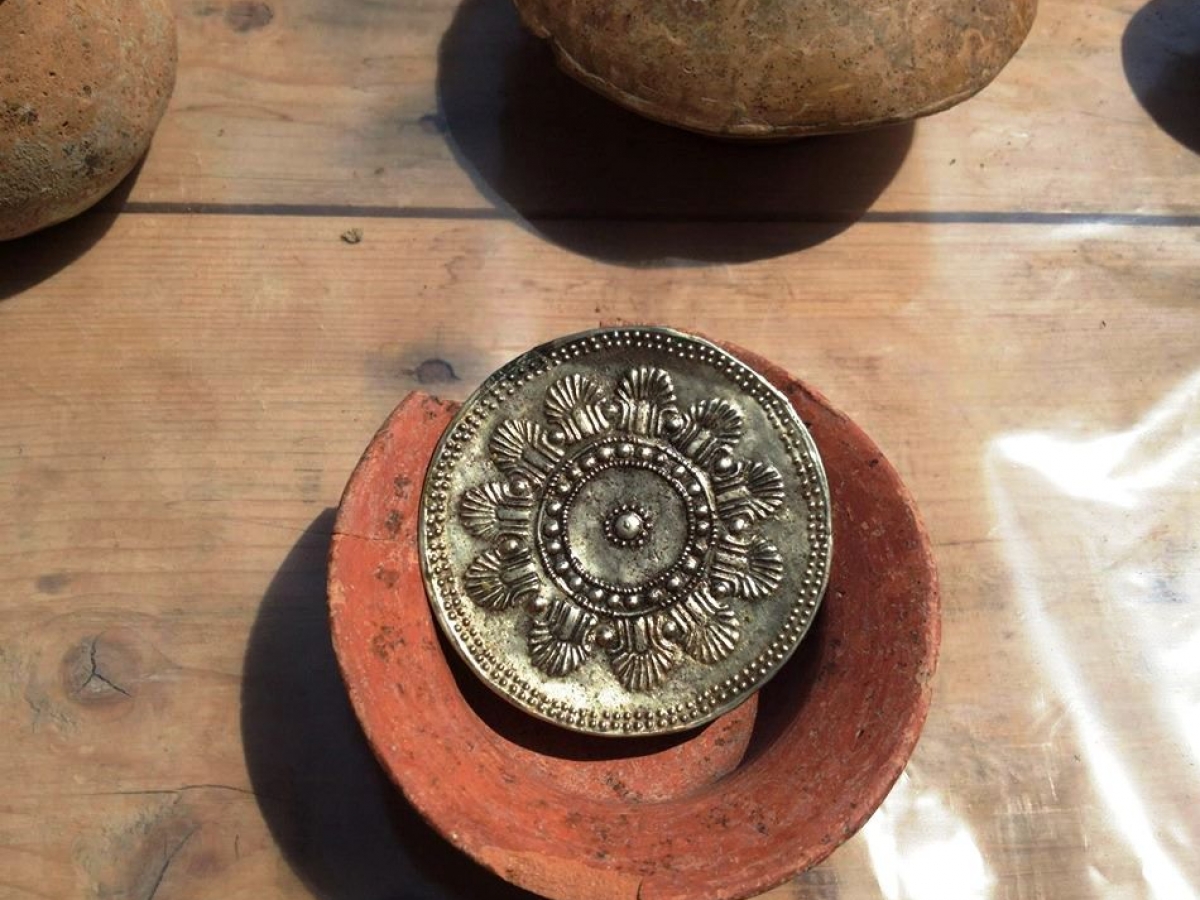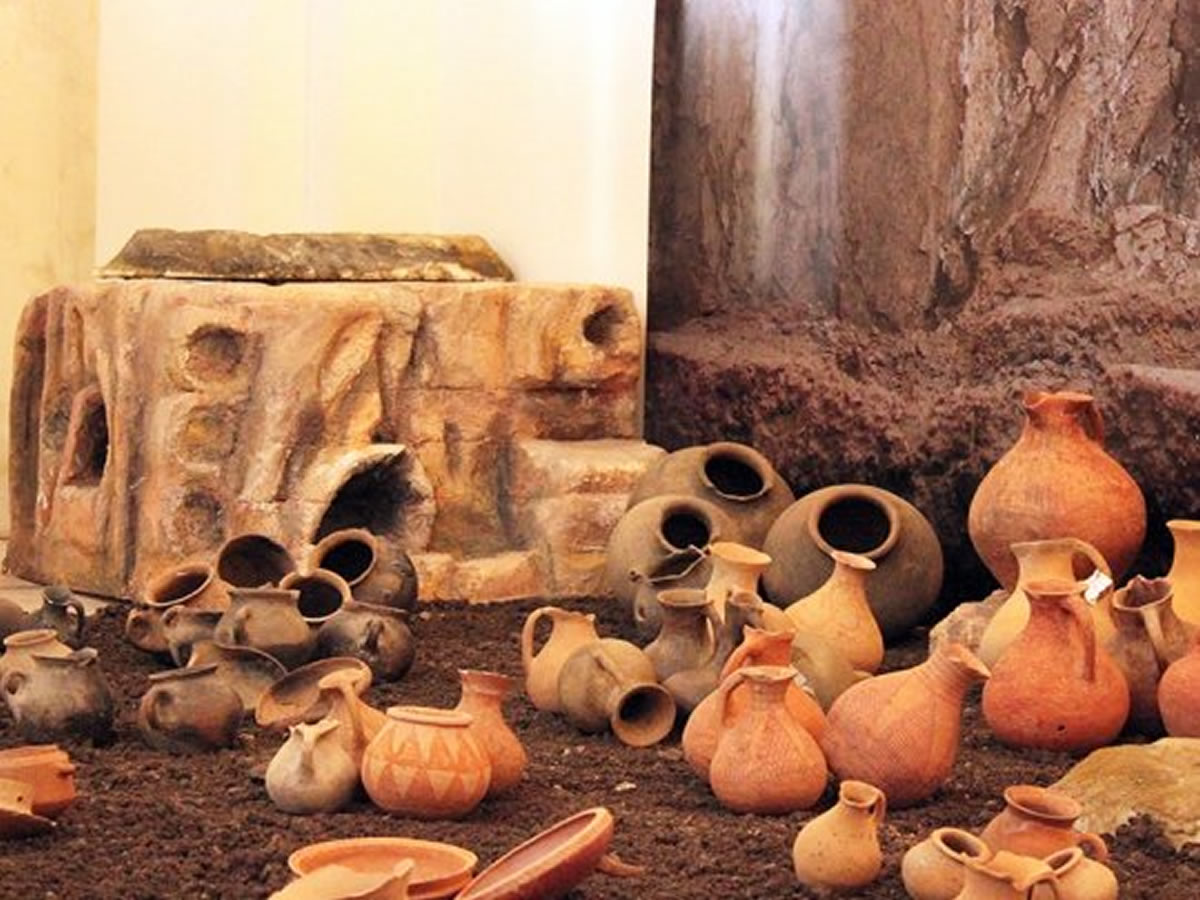Grakliani Hill
Archaeological Discoveries in Georgia
Grakliani Hill is an archaeological site in eastern Georgia, near Kaspi. It was discovered in 2007 during the expansion works of the Tbilisi-Senaki-Leselidze highway. The site provides evidence of human presence dating back approximately 300,000 years.
One of the most significant discoveries at Grakliani Mountain is the two distinct scripts found on the altars of a temple dedicated to the goddess of fertility, dated to the 10th century BCE. These writings predate previously known scripts in the region by at least a thousand years. Artifacts from various periods were also discovered, including children's toys, weapons, and pharmacological tools.
The Grakliani script, discovered at Grakliani Hill, represents an ancient writing system that is approximately 3,000 years old. This script has no direct parallels in the world and is considered one of the oldest writing systems ever uncovered. On the other hand, Georgian script Asomtavruli is one of the three historical Georgian alphabets alongside Nuskhuri and Mkhedruli. Asomtavruli, the oldest of the three, was mainly used in religious texts and inscriptions on icons. While the exact connection between the Grakliani script and Asomtavruli is still under study, both scripts are important for understanding the development of written language in the region. The discovery of the Grakliani script has provided valuable insights into the early stages of writing in Georgia and its evolution into later Georgian scripts.
The materials unearthed belong to various periods, from the Paleolithic to the 2nd–1st centuries BCE. Over two months, 35,000 artifacts were discovered, including hundreds of burials and settlements from the 8th–1st centuries BCE, residential complexes, ceremonial structures, ceramics, and items made of bronze, iron, silver, and gold, as well as household and military tools and ornaments. Particularly important finds include golden and bronze discs dating to the 4th century BCE, confirming at least a 3,000-year history of Georgian statehood.
At Grakliani, printing presses for legal documents, initially manufactured in Uruk in southern Mesopotamia, were discovered for the first time in the Caucasus. These rare artifacts are displayed in prestigious museums like the British Museum and the Louvre. The 6,000-year-old items were used to authenticate various documents and likely regulated trade relations. Such objects were initially found only in southern Mesopotamia and later in Anatolia, eastern Turkey, eventually spreading to western regions. Skeletons of the individuals who used these presses were also discovered, indicating that the local society had a high level of development, acknowledging the power of legal agreements. Previously, it was assumed that in the 5th–4th centuries BCE, Kartli was an economically depressed and culturally regressive region. The discoveries at Grakliani proved the opposite, showcasing connections with southern Mesopotamia, Urartu, and Achaemenid Iran. The locals adapted all technological innovations and cultural elements of that period. Among the artifacts, a unique, artistically decorated sacred furnace—an altar—holds a special place as it has no parallels worldwide.
On "Grakliani Hill," an open-air museum is being constructed under the initiative of the National Agency for Cultural Heritage Preservation and Tbilisi State University.
Other significant discoveries at Grakliani include a golden disc from the 4th millennium BCE, whose only counterpart exists in Susa, Iran; a printing press (dated to the 4th millennium BCE), similar to one found in southern Mesopotamia, Uruk; and an intricately decorated sacred furnace. Grakliani Mountain is a multilayered archaeological site showcasing continuous societal development over 300,000 years, from the Stone Age to the Roman period. The terraces on Grakliani Mountain contain dwellings, agricultural structures, temples, and tombs dated from the 4th millennium BCE to the 1st millennium CE.
The historical significance of Grakliani is further emphasized by unique architectural remains discovered on the third terrace—a temple complex (400–350 BCE) measuring 25 meters in width and 6 meters in length. The temple complex preserved 2-meter-high walls plastered with fine clay and decorated with ornamental elements, which housed ritual furnaces and altars within.
Scholars believe the discoveries at Grakliani Hill have the potential to rewrite world history.
Grakliani Hill is an archaeological site in eastern Georgia, near Kaspi. It was discovered in 2007 during the expansion works of the Tbilisi-Senaki-Leselidze highway. The site provides evidence of human presence dating back approximately 300,000 years.
One of the most significant discoveries at Grakliani Mountain is the two distinct scripts found on the altars of a temple dedicated to the goddess of fertility, dated to the 10th century BCE. These writings predate previously known scripts in the region by at least a thousand years. Artifacts from various periods were also discovered, including children's toys, weapons, and pharmacological tools.
The Grakliani script, discovered at Grakliani Hill, represents an ancient writing system that is approximately 3,000 years old. This script has no direct parallels in the world and is considered one of the oldest writing systems ever uncovered. On the other hand, Georgian script Asomtavruli is one of the three historical Georgian alphabets alongside Nuskhuri and Mkhedruli. Asomtavruli, the oldest of the three, was mainly used in religious texts and inscriptions on icons. While the exact connection between the Grakliani script and Asomtavruli is still under study, both scripts are important for understanding the development of written language in the region. The discovery of the Grakliani script has provided valuable insights into the early stages of writing in Georgia and its evolution into later Georgian scripts.
The materials unearthed belong to various periods, from the Paleolithic to the 2nd–1st centuries BCE. Over two months, 35,000 artifacts were discovered, including hundreds of burials and settlements from the 8th–1st centuries BCE, residential complexes, ceremonial structures, ceramics, and items made of bronze, iron, silver, and gold, as well as household and military tools and ornaments. Particularly important finds include golden and bronze discs dating to the 4th century BCE, confirming at least a 3,000-year history of Georgian statehood.
At Grakliani, printing presses for legal documents, initially manufactured in Uruk in southern Mesopotamia, were discovered for the first time in the Caucasus. These rare artifacts are displayed in prestigious museums like the British Museum and the Louvre. The 6,000-year-old items were used to authenticate various documents and likely regulated trade relations. Such objects were initially found only in southern Mesopotamia and later in Anatolia, eastern Turkey, eventually spreading to western regions. Skeletons of the individuals who used these presses were also discovered, indicating that the local society had a high level of development, acknowledging the power of legal agreements. Previously, it was assumed that in the 5th–4th centuries BCE, Kartli was an economically depressed and culturally regressive region. The discoveries at Grakliani proved the opposite, showcasing connections with southern Mesopotamia, Urartu, and Achaemenid Iran. The locals adapted all technological innovations and cultural elements of that period. Among the artifacts, a unique, artistically decorated sacred furnace—an altar—holds a special place as it has no parallels worldwide.
On "Grakliani Hill," an open-air museum is being constructed under the initiative of the National Agency for Cultural Heritage Preservation and Tbilisi State University.
Other significant discoveries at Grakliani include a golden disc from the 4th millennium BCE, whose only counterpart exists in Susa, Iran; a printing press (dated to the 4th millennium BCE), similar to one found in southern Mesopotamia, Uruk; and an intricately decorated sacred furnace. Grakliani Mountain is a multilayered archaeological site showcasing continuous societal development over 300,000 years, from the Stone Age to the Roman period. The terraces on Grakliani Mountain contain dwellings, agricultural structures, temples, and tombs dated from the 4th millennium BCE to the 1st millennium CE.
The historical significance of Grakliani is further emphasized by unique architectural remains discovered on the third terrace—a temple complex (400–350 BCE) measuring 25 meters in width and 6 meters in length. The temple complex preserved 2-meter-high walls plastered with fine clay and decorated with ornamental elements, which housed ritual furnaces and altars within.
Scholars believe the discoveries at Grakliani Hill have the potential to rewrite world history.














